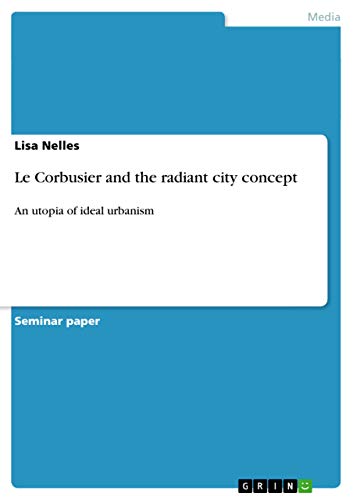Verwandte Artikel zu Le Corbusier and the radiant city concept: An utopia...

Zu dieser ISBN ist aktuell kein Angebot verfügbar.
Alle Exemplare der Ausgabe mit dieser ISBN anzeigen:„Über diesen Titel“ kann sich auf eine andere Ausgabe dieses Titels beziehen.
- VerlagGRIN Verlag
- Erscheinungsdatum2013
- ISBN 10 3656547181
- ISBN 13 9783656547181
- EinbandTapa blanda
- Auflage1
- Anzahl der Seiten20
Neu kaufen
Mehr zu diesem Angebot erfahren
Versand:
EUR 32,99
Von Deutschland nach USA
Beste Suchergebnisse beim ZVAB
Le Corbusier and the radiant city concept : An utopia of ideal urbanism
Buchbeschreibung Taschenbuch. Zustand: Neu. Druck auf Anfrage Neuware - Printed after ordering - Seminar paper from the year 2013 in the subject Art - Architecture / History of Construction, grade: -, Technical University of Darmstadt, language: English, abstract: Charles-Édouard Jeanneret-Gris, born October, 6th 1887, is known as one of the most important architects of the last century. Otherwise, he is also seen extremely controversial in-between his artistic municipality. According to his point of view of architecture as a complex art of construction, he also dealt with architectural theory, city planning, sculpture and designing of furniture. Additionally, he was creative in drawing and painting. In 'L'Esprit Nouveau' - an artistic magazine published since 1920 - he began to use the pseudonym Le Corbusier. Due to architecture, Le Corbusier's so-called 'Five Points of a new Architecture' are very important. These principles point out a radical architectural change in order to react to the accelerating progress of mechanization and its influence on social change. As a result, Le Corbusier especially dealt with the construction of accommodations to implement his complex theory consistently. So-called 'Doppelhaus in der Weißenhofsiedlung in Stuttgart' - designed by Pierre Jeanneret and Le Corbusier - seems to be an example.To give his theories and visions a suited area, Le Corbusier academically worked in architectural societies like 'Congrès Internationaux d'Architecture Moderne' (CIAM). However, the architect was one of CIAM's co-founders. Until the mid 1920s, Le Corbusier was both, a social and an artistic supporter of capitalism. 'Ville Contemporaire' (1922) with its forced authority, clear structure and geometry is an important evidence for his ideal. Since the beginning of the crisis of global economy in 1929, Le Corbusier has changed his point of view in a more radical one. The architect became an infernal supporter of so-called French syndicalism. Le Corbusier died on August, 27th 1965. Artikel-Nr. 9783656547181
Weitere Informationen zu diesem Verkäufer | Verkäufer kontaktieren

